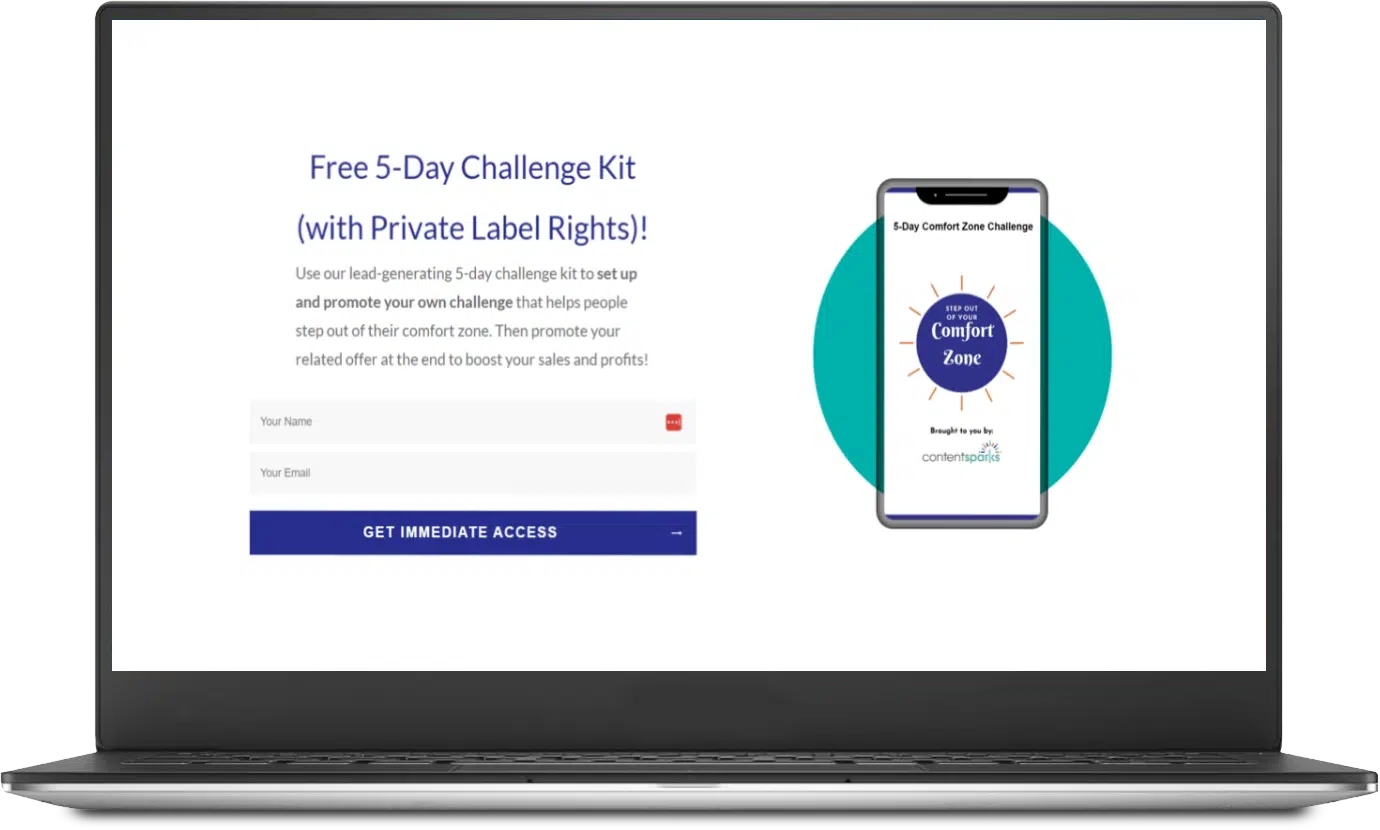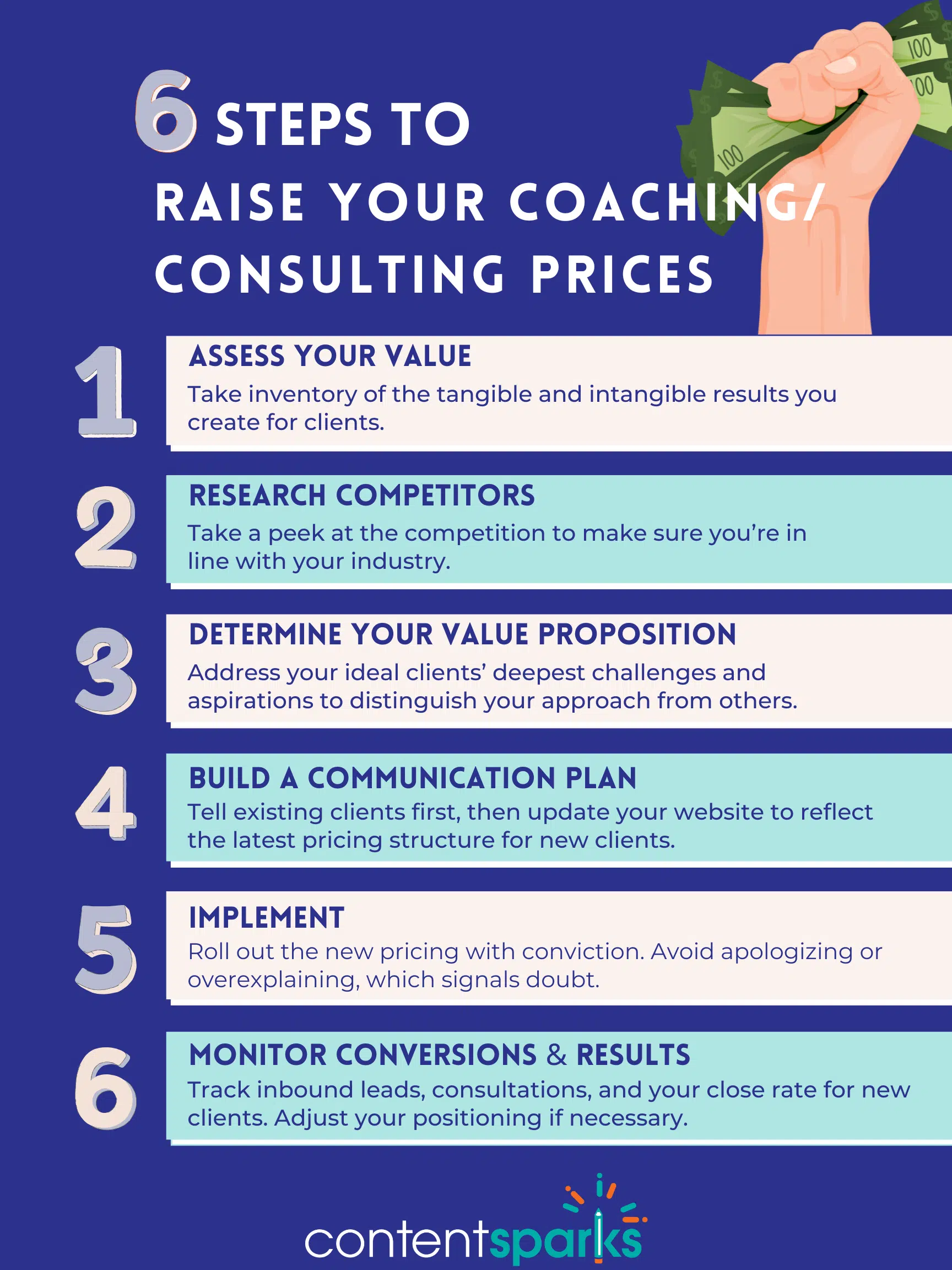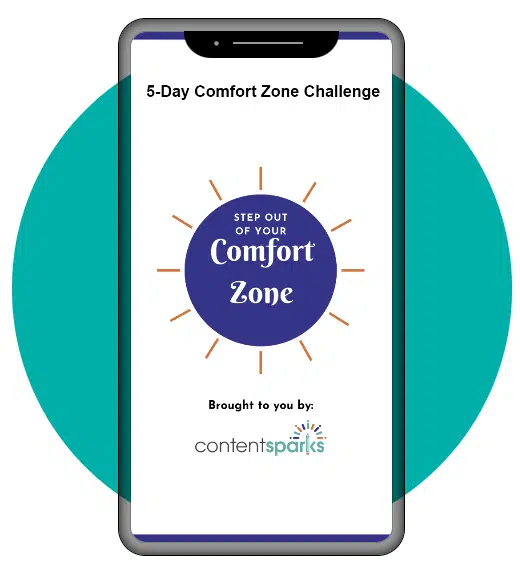How to Raise Prices for Your Coaching/Consulting Business (without Losing Clients)
0 comments
0 comments
Want to know a scam-free way to bump up your revenue by 50%?
Oh, and it could take as little as 30 minutes of your time.
No, I’m not going to share a new growth hack with you or the latest fad. It’s just one simple tip: raise your prices.
If you want to make more money from your business, the fastest way to do that is to raise your prices. Asking for money can be hard enough for coaches and consultants, and raising prices can be even harder.
In this guide, I’m going to break down the exact strategies to follow to raise prices and scale your coaching or consulting business faster.
I get it – raising prices can be intimidating and scary.
Asking for money is hard enough, but asking for more puts off even the most seasoned coaches and consultants.
But trust me, it’s worth it.
For one, raising your prices isn’t just about asking for more money. Raising your prices is about acknowledging the true value you deliver for your clients and signaling that to future clients.
I’m willing to bet that in the past year, you’ve learned quite a bit and built up your expertise. You might have updated your signature system, revamped your approach to solving problems for your clients, or earned a few new fantastic case studies.
Why shouldn’t your price reflect that?
You’re not the same “you” that you were in the past, and as a result, your offer isn’t the same either. While higher prices can exclude some potential clients from working with you, they also…
Raising prices is a sign that you value your work, and that means a stronger business and improved confidence and self-worth to boot. If you're consistently booking out and delivering exceptional results, your current pricing is probably undervalued, and both you and your ideal clients deserve better.
Okay, you’re sold on raising prices. Now comes the big question: when should you do it?
At the risk of giving a cliché answer, it depends.
It will depend on your business, workload, competition, and financial situation, but you can gauge things by watching out for the following “warning signs:”
It varies from person to person, but the above signals are usually good to keep an eye out for.
Feeling like it’s time? Keep reading for practical advice on how to raise your prices and roll things out.

Grab Your Free 5-Day Challenge Kit
Set up and promote your own challenge that helps people step out of their comfort zone
Before I get to the specific steps on how to raise your prices, this is a common question I hear from customers.
The thought of losing clients over a price increase is enough to prevent some coaches or consultants from ever raising their prices. If you’re in that camp, keep reading.
You have a couple of options for existing clients:
Will you lose some clients? Maybe… or maybe not. Many coaches and consultants find that their clients respect the decision and see it as a sign of a growing business that is in demand.
That said, it’s not something to take lightly. Read on as I give you an exact step-by-step breakdown on raising your prices!

Once you’ve settled on raising your prices, here are your six steps to making it happen:
I’ll walk you through each one in detail next.
Before raising prices, you need to know how much to increase by. And to do that, you need to assess your value.
I recommend you take inventory of the tangible and intangible results you create for clients. This means documenting case studies, testimonials, and transformation stories. If possible, calculate the ROI that you generate for clients to provide a tangible sense of the value you provide.
Don't forget soft skills like intuition, relationship-building, and problem-solving that make your approach distinctive. The more specific you can be about your impact, the more confident you'll feel setting higher prices that reflect your true value.
It doesn’t hurt to take a peek at the competition to make sure you’re in line with your industry.
How are your competitors structuring their business and offers? Have any of them raised prices recently? If so, by how much?
I recommend you look, but don’t be limited by your competition. After all, there are cheaper laptops than a MacBook Pro, but Apple carved out a good niche for itself. When reviewing the pricing and packaging of your competitors, I recommend you review their messaging and delivery methods too.
Remember, this research isn't about copying or undercutting; it's about understanding the landscape so you can intentionally position yourself within it or break convention altogether.
When raising your coaching or consulting price, chances are you may need to adjust your value proposition. After all, while you certainly deserve that price increase, you also need to justify it!
A new value proposition goes beyond the features and benefits of your services. Your value proposition should address their deepest challenges and aspirations, distinguishing your approach from alternatives.
Again, it’s helpful to assess the tangible benefits you can provide to clients and how your unique expertise and perspective make them happen. A strong value proposition makes price less relevant because clients understand they're not buying your time—they're investing in results.
Now that you have a new price for your services and a clear value proposition to justify the increase, it’s time to update your audience.
I recommend starting with existing clients first, then updating your website to reflect the updated pricing structure for new clients. You may want to draft scripts for different scenarios, whether you're having one-on-one conversations or sending emails.
Don’t forget to anticipate questions or concerns, especially from existing clients!
Now it’s time for the rubber to meet the road.
When you roll out the new pricing, do so with conviction. Avoid apologizing or overexplaining, which signals doubt. Remember, this is about properly valuing your services and the impact you create for your clients.
Update your website, proposal templates, intake forms, and service descriptions. If you decide to offer a deadline for booking at current rates, honor it and stand firm.
Don’t forget this part!
Pricing is not a “one and done” activity. It’s a constant process of tweaking and optimization. At your new (higher) price point, you should track inbound leads, consultations, and your close rate for new clients. It may be that some more positioning work is needed to justify the higher price, or sales come in just as easily, meaning you could get away with another price bump.
If sales come to a stop, don't immediately panic or revert to old pricing. Instead, examine whether your messaging fully supports your new positioning or if your sales process needs more tweaking.
Running a coaching business or agency often feels like a feast or famine of client work.
Some days you’re busier than ever… but then a week wraps up without a single sales call, and you’re wondering if you will ever get a new client (or worse, need to get a full-time job).
The cure? An audience.
Building an engaged audience will give you the opportunity to demonstrate your value and skills time and time again while nurturing new leads into customers. But, building that audience is easier said than done, so here’s a special offer for you.
I develop info products and courses all the time, and I’m giving away a free 5-Day Challenge template that you can use. Challenges are excellent list builders, and I know that with your unique spin, you can turn this challenge into an effective lead magnet in no time.
Get the free challenge kit here and put what you learned in this article into practice!

Free 5-Day Challenge Kit
(with Private Label Rights)!
Enjoy!

Tags